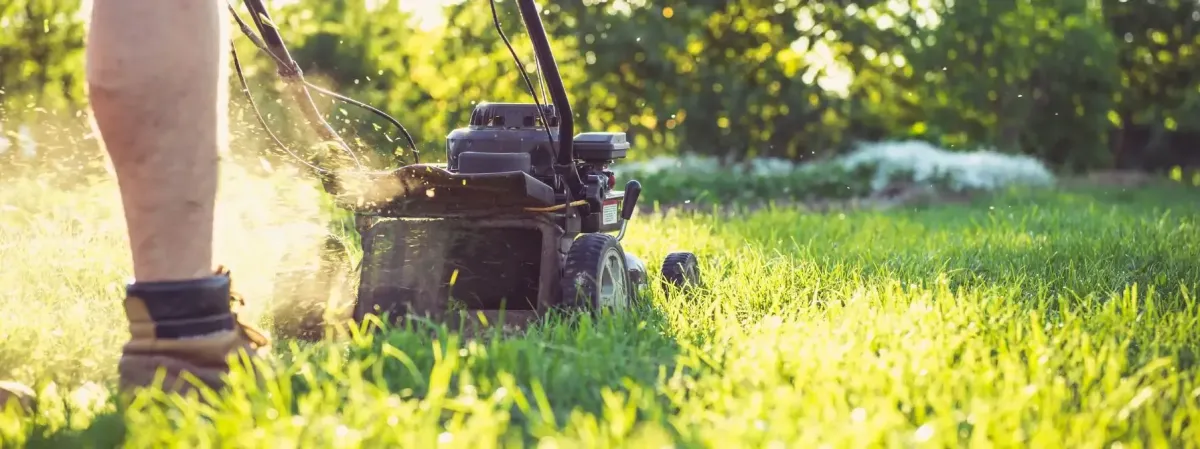
Essential Seasonal Lawn Care Tips for Baltimore Residents
Baltimore’s weather can be unpredictable, swinging from snowy winters to hot, dry summers. That variability makes it essential to adjust your lawn care strategy throughout the year. If you're a homeowner or property manager in the Baltimore area, staying ahead of the seasonal shifts ensures your lawn stays healthy, vibrant, and ready to impress.
Let’s walk through what you can do during each season to keep your lawn in peak condition.
Spring: Wake Up Your Lawn After Winter
Spring is when your lawn starts to bounce back from dormancy. It’s the ideal time to clean up, feed the soil, and prepare for the growing season.
Start with a Cleanup:
Winter leaves behind fallen branches, matted leaves, and debris that can smother your grass. A thorough raking helps remove this clutter and improves air circulation, reducing the risk of fungal diseases.
Test and Amend Your Soil:
Soil testing tells you if your lawn is lacking nutrients or if the pH is off. Based on the results, you can add lime, sulfur, compost, or other amendments to create the perfect growing environment.
Mow and Seed Early:
Once the grass starts growing, give it its first trim—but don’t cut too short. Mowing encourages new growth, and spring is also a great time to fill in bare spots with grass seed.
Control Weeds and Pests:
Apply pre-emergent herbicides to stop weeds like crabgrass before they sprout. Spot treat early infestations of pests and use natural solutions when possible to minimize chemical use.
Summer: Defend Against Heat and Drought

Baltimore summers are hot and sometimes dry. To keep your lawn looking lush, you'll need to adapt your care routine.
Raise the Mower Blades:
Cutting your grass a bit higher helps shade the soil and retain moisture. It also makes it harder for weeds to take hold.
Water Deeply, Not Often:
Aim for one inch of water per week, ideally applied early in the morning. Deep watering encourages deeper root systems that handle drought better.
Keep Weeds in Check:
Warm-weather weeds like dandelions and clover thrive in stressed lawns. A healthy, thick turf is your best defense, but you can spot treat when necessary.
Watch for Heat Stress:
If your lawn starts to look dull, wilted, or patchy, it might be stressed. Adjust watering schedules and try to limit heavy foot traffic until conditions improve.
Fall: Prepare for a Healthy Spring

Fall is the season to restore your lawn from summer damage and prepare it for winter.
Rake Regularly:
Fallen leaves block sunlight and trap moisture, creating the perfect conditions for disease. Keep the lawn clear with regular raking.
Aerate and Overseed:
Aerating loosens compacted soil and allows water and nutrients to reach the roots. Overseeding fills in thin spots and helps establish a thicker lawn for spring.
Apply Fall Fertilizer:
A fertilizer rich in phosphorus and potassium strengthens roots and prepares your grass for winter. Look for slow-release formulas made specifically for fall.
Winterize Your Irrigation:
Drain sprinkler systems before freezing temperatures hit to avoid pipe damage. Remove and store sprinkler heads if possible.
Winter: Protect Your Lawn While It Rests
Grass goes dormant in winter, but that doesn’t mean you should ignore your lawn completely.
Limit Foot Traffic:
Dormant grass is more fragile. Try not to walk on it too much, and avoid parking anything heavy on it.
Protect from Frost and Salt:
Use barriers or mulch near walkways to protect grass from salt damage. Flushing salty areas with water during warmer spells can help mitigate the damage.
Inspect for Winter Pests:
Some pests, like grubs, stay active beneath the surface. Check your lawn during mild spells and treat as needed to prevent bigger problems in spring.
Plan Ahead:
Winter is the perfect time to assess what worked (and what didn’t) during the year. Use the downtime to schedule services and prepare for spring.
Understand Baltimore’s Unique Climate
Baltimore’s location puts it in a transitional climate zone—hot, humid summers and cold, often wet winters. That means flexibility is key.
USDA Hardiness Zone: Baltimore falls mostly in Zone 7, which supports cool-season grasses like tall fescue and Kentucky bluegrass.
Rainfall Patterns: Expect more rain in spring and fall, with drier stretches in summer. Adjust your watering accordingly.
Microclimates: City trees, fences, and buildings create small climate pockets. Some areas may dry out faster or stay damp longer—observe and treat each area individually.
Choosing the Right Grass for Baltimore Lawns
Picking the right grass is half the battle. Baltimore's conditions are best suited to cool-season grasses, but there are exceptions.
Great Options for Baltimore Lawns:
Tall Fescue: Deep roots, good drought resistance, low maintenance.
Kentucky Bluegrass: Dense and lush but needs regular care.
Fine Fescue: Ideal for shady areas, with soft texture and low mowing height.
For Sunny or Hot Spots:
Bermuda Grass: Heat-tolerant and fast-growing, but goes dormant in winter.
Centipede Grass: Low-maintenance and heat-resistant for very sunny areas.
Choose grasses based on how much sun, shade, and traffic your yard gets.
Smart Watering Practices
Efficient watering isn’t just good for your lawn—it’s better for your wallet, too.
Tips for Smart Watering:
Water early in the morning (between 4 a.m. and 8 a.m.).
Aim for one inch per week, adjusting for rainfall.
Use drip irrigation or smart controllers to reduce waste.
Watch for signs of stress: Yellowing might mean too much water; brittle grass often means too little.
Common Lawn Problems and How to Fix Them
Every season brings its own challenges, but with the right approach, you can stay ahead of issues.
Seasonal Troubles to Watch:
Spring: Leaf spot, mildew – treat early with eco-safe fungicides.
Summer: Crabgrass, grubs – mow higher and apply organic treatments.
Fall: Brown patches – aerate and manage watering to prevent fungal growth.
Winter: Salt damage near sidewalks – use barriers and flush the area when possible.
Advanced Lawn Care Techniques Used by the Pros
Want your lawn to really stand out? These pro techniques can make a big difference:
Soil Amendments: Add compost or minerals to improve structure and nutrient flow.
Dethatching: Remove dead organic matter to let your grass breathe.
Topdressing: Spread a light layer of soil or compost to smooth uneven spots and enrich the lawn.
Organic Care: Use compost tea, natural fertilizers, and eco-friendly treatments to create a healthier, more sustainable lawn.
Your Next Step to a Better Lawn
Managing your Baltimore lawn year-round takes planning and effort—but you don’t have to do it alone. At HMD Landscaping, we offer seasonal lawn care services tailored to your property’s specific needs. Whether you need help with spring cleanups, irrigation system winterizing, or choosing the right grass for a tricky spot, our local experts are ready to help.
Let’s make your lawn the best on the block. Contact us today to schedule a consultation.
